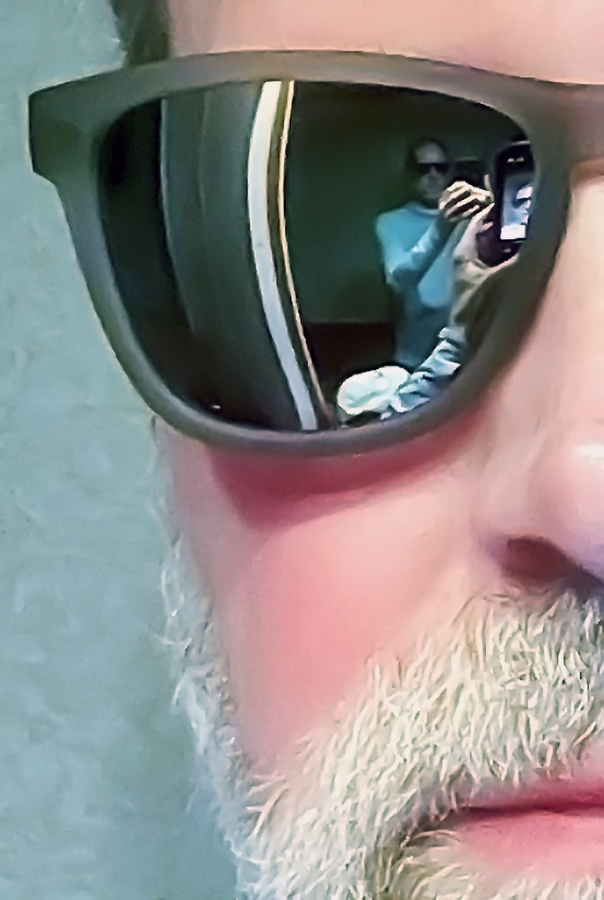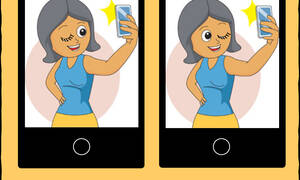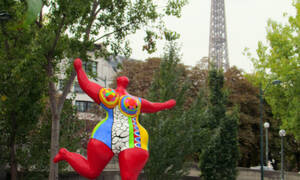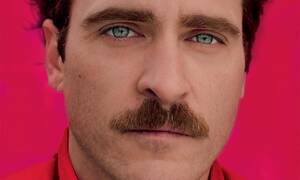In recognition of World Photo Day, I am posting images of the first photograph and the earliest known photograph of people. We can thank two Frenchmen for these photos, and for their contributions to the development of photography. (Raise a glass of Chardonnay, or have a french fry, if you prefer.)
If you are reading these words on your smartphone, so much the better to make my point. Photography has progressed from rare, grainy tin plates to ubiquitous, digital images made and shared worldwide in seconds. This advance occurred over 200 years, but the volume, speed and ease of making photos has skyrocketed since smartphones arrived. That was just a decade ago.
The first nature photo
 Joseph Nicéphore Niépce (1765-1833) began trying to create images using the camera obscura in 1816. The first camera: a hinged wooden box with a lens covering a hole on one side. When he removed the lens cover, sunlight fell inside on a piece of flat tin treated with various substances. An early hurdle in photography was figuring out how to keep captured images from fading away. Today, the problem is deciding which ones to delete to avoid paying for extra cloud storage. Or for some people, how to get rid of images online that they should never have made.
Joseph Nicéphore Niépce (1765-1833) began trying to create images using the camera obscura in 1816. The first camera: a hinged wooden box with a lens covering a hole on one side. When he removed the lens cover, sunlight fell inside on a piece of flat tin treated with various substances. An early hurdle in photography was figuring out how to keep captured images from fading away. Today, the problem is deciding which ones to delete to avoid paying for extra cloud storage. Or for some people, how to get rid of images online that they should never have made.
In 1826 or 1827, Niépce pointed the camera out of his studio window and made the photograph below. It was the first to survive as a preserved image. As grainy as it is, I have made worse with my old iPhone 4. If you think scrolling through your phone’s camera roll is laborious, or pawing through shoe boxes of old prints and negatives is a pain, imagine evaluating your shot by looking at a murky piece of tin like the one used for Niépce’s first photo. (Pictured second below.)
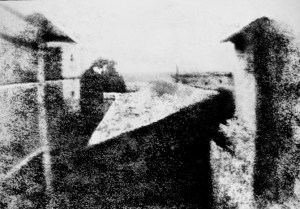
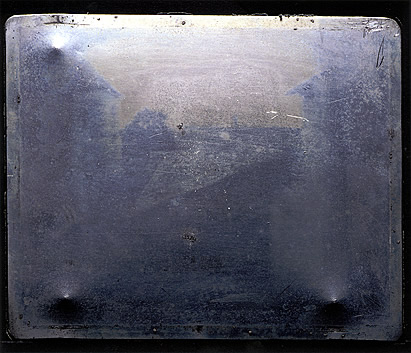
The first photo of people
 Louis Daguerre (1787-1851) formed a partnership with Niépce in 1829. After Niépce died, Daguerre advanced the photographic arts with silver-plated copper sheets and new chemical formulations to develop the captured images. His discoveries made photography more practical by shortening exposure times. The process named for him, the daguerreotype, revolutionized photography and hastened its popularity.
Louis Daguerre (1787-1851) formed a partnership with Niépce in 1829. After Niépce died, Daguerre advanced the photographic arts with silver-plated copper sheets and new chemical formulations to develop the captured images. His discoveries made photography more practical by shortening exposure times. The process named for him, the daguerreotype, revolutionized photography and hastened its popularity.
Even with his improvements, photography was a slow process. When Daguerre pointed a camera out of his studio window one morning in 1838, he captured what looks like an empty street. However, the Boulevard du Temple in Paris would have been bustling with people at 8 a.m. Because of the long exposure time, the only people visible (lower left of photo) are a man standing still while a seated bootblack shines his shoes.
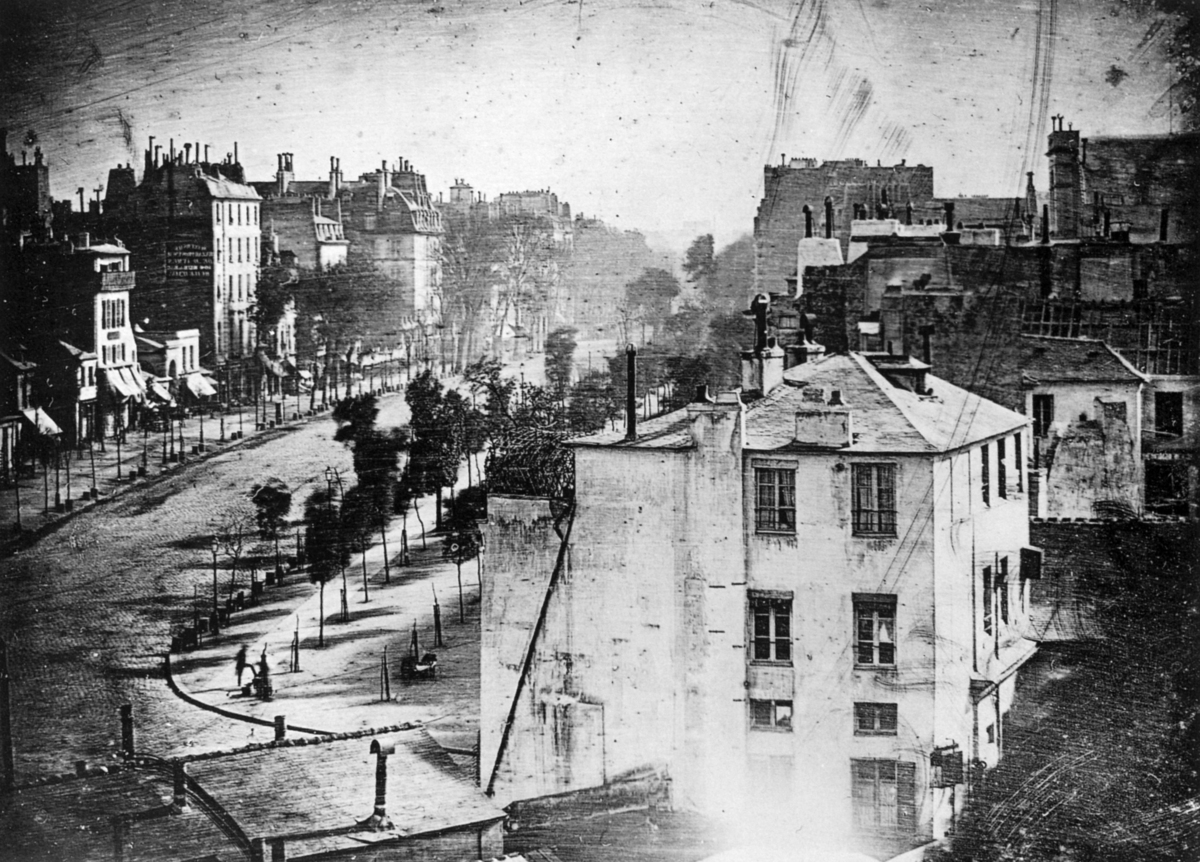
Modern photography
Today, it impossible to go almost anywhere without encountering people making photos with their phones. The habit is now as ingrained as making phone calls in public. With about 1 billion smartphones in use around the world, some have estimated that humanity now makes about 1 trillion photos per year.
As intelligent and visionary as Niépce and Daguerre were, I doubt even they could have envisioned where the field they helped invent would go. And with virtual reality knocking at the door, future advances in photography and video promise to make our full-color, high-resolution, filtered and cropped photos seem as primitive as the ones made in the early 1800s.
![]()
